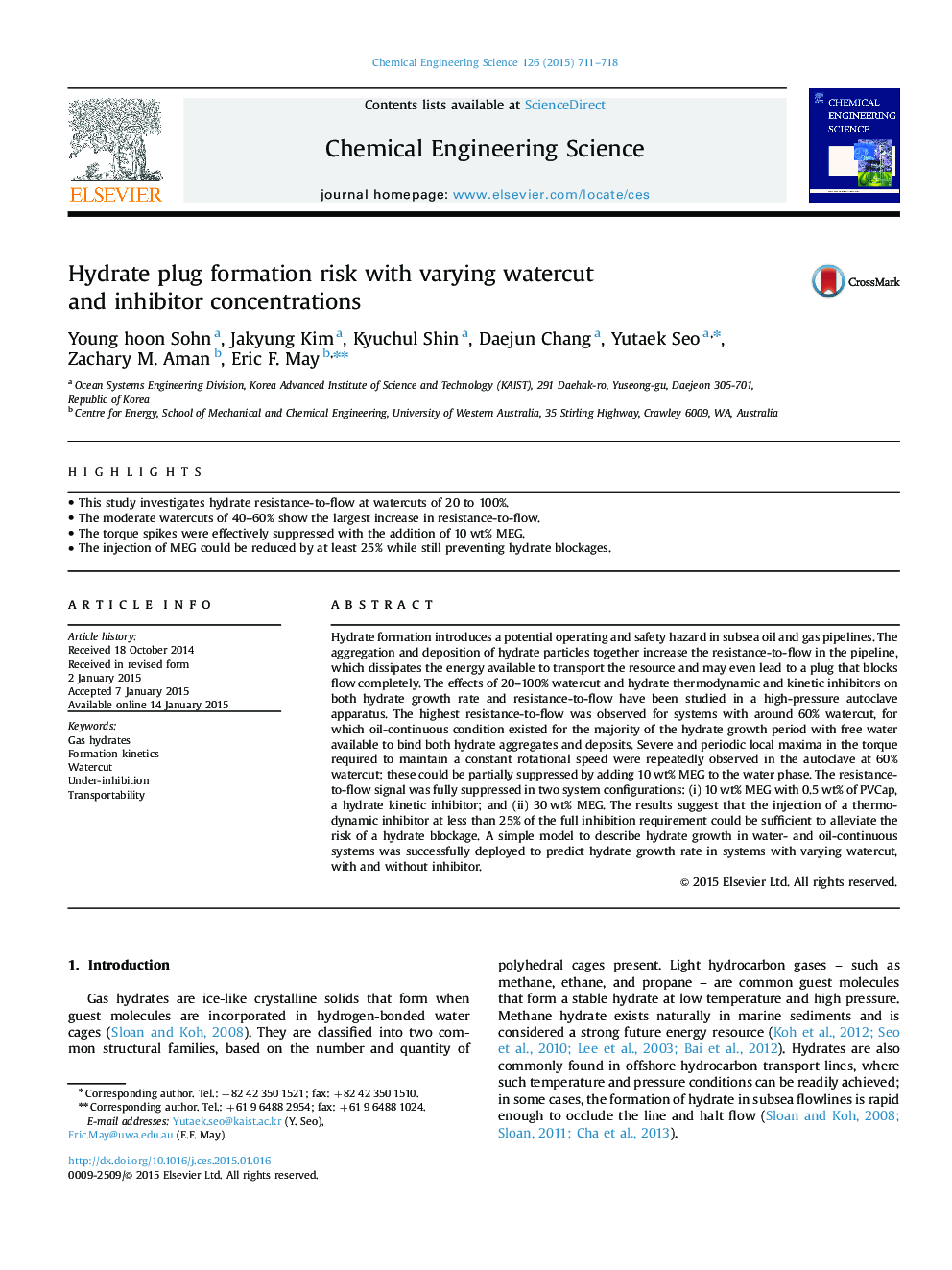| Article ID | Journal | Published Year | Pages | File Type |
|---|---|---|---|---|
| 6590366 | Chemical Engineering Science | 2015 | 8 Pages |
Abstract
Hydrate formation introduces a potential operating and safety hazard in subsea oil and gas pipelines. The aggregation and deposition of hydrate particles together increase the resistance-to-flow in the pipeline, which dissipates the energy available to transport the resource and may even lead to a plug that blocks flow completely. The effects of 20-100% watercut and hydrate thermodynamic and kinetic inhibitors on both hydrate growth rate and resistance-to-flow have been studied in a high-pressure autoclave apparatus. The highest resistance-to-flow was observed for systems with around 60% watercut, for which oil-continuous condition existed for the majority of the hydrate growth period with free water available to bind both hydrate aggregates and deposits. Severe and periodic local maxima in the torque required to maintain a constant rotational speed were repeatedly observed in the autoclave at 60% watercut; these could be partially suppressed by adding 10Â wt% MEG to the water phase. The resistance-to-flow signal was fully suppressed in two system configurations: (i) 10Â wt% MEG with 0.5Â wt% of PVCap, a hydrate kinetic inhibitor; and (ii) 30Â wt% MEG. The results suggest that the injection of a thermodynamic inhibitor at less than 25% of the full inhibition requirement could be sufficient to alleviate the risk of a hydrate blockage. A simple model to describe hydrate growth in water- and oil-continuous systems was successfully deployed to predict hydrate growth rate in systems with varying watercut, with and without inhibitor.
Related Topics
Physical Sciences and Engineering
Chemical Engineering
Chemical Engineering (General)
Authors
Young hoon Sohn, Jakyung Kim, Kyuchul Shin, Daejun Chang, Yutaek Seo, Zachary M. Aman, Eric F. May,
